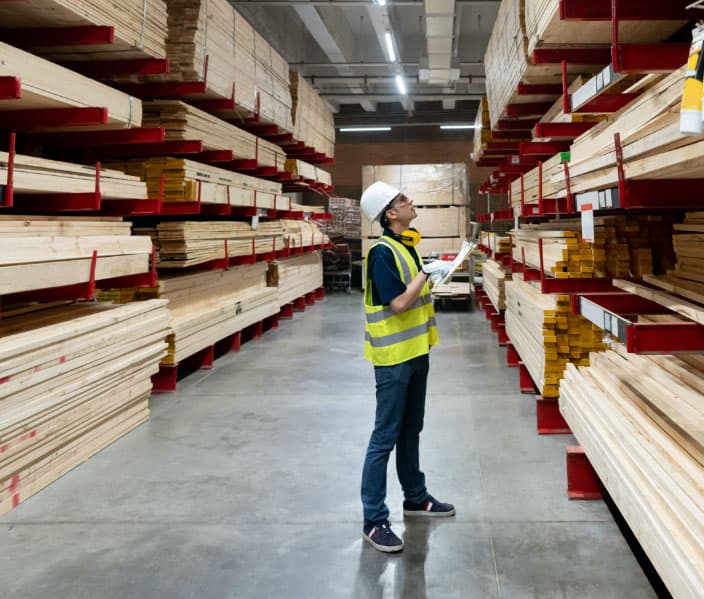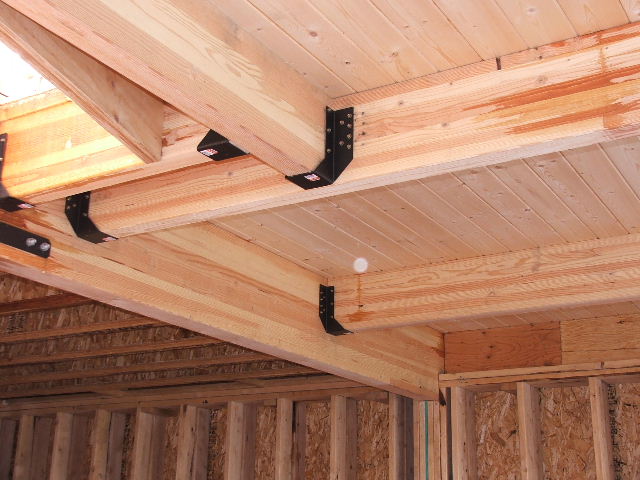Major Milestones of the Softwood Plywood Industry

Article Source: www.apawood.org/apas-history
The average person may not realize the significance of the softwood plywood industry to our economy and culture.
Since our roots are in the wood products industry, we thought it would be interesting to take a look back at the history of the softwood plywood Industry and the impact it has had on the United States.
What began as a product introduced by a small wooden box company in Oregon has grown into a major global industry. Today, the United States is the leading producer of softwood plywood and worlds largest producer of softwood lumber, followed by Canada and Russia according to www.state.sc.us/forest.
“Plywood is widely regarded as the original ‘engineered wood product’ because it was one of the first to be made by bonding together cut or refashioned pieces of wood to form a larger and integral composite unit. This idea of “reconstituting” wood fiber to produce better-than-wood building materials has led in more recent times to a technological revolution and the rise of a whole new engineered wood products industry.”-www.apawood.org
Here are some of the important milestones in this industry:

1905
Portland Manufacturing Company, a small wooden box factory, produced “3-ply veneer work”, the first commercial softwood plywood product to be introduced to the public.
The product, made of Pacific Northwest Douglas-fir, was displayed at the World’s Fair held in Portland.
Orders started coming in from door, cabinet and trunk manufacturers.
Other mills began making the product and the new industry spread north to Washington.
1913
The first Canadian plywood was produced at Fraser Mills in New Westminster, British Columbia.
1920s
Automobile manufacturers began using plywood for running boards.
1925
11 U.S. plants were producing 153 million square feet of plywood per year.
1933
Douglas Fir Plywood Association, the first nonprofit trade association in the industry, was founded in Tacoma, WA.
The new association developed a nationwide promotion program and helped mills assure consistent product quality.
Douglas Fir Plywood Association also helped to develop new markets and new business during the Great Depression.
1934
Waterproof glue was discovered which led to even more product application opportunities.
1938
A new commercial standard was developed and the product was promoted as a standardized commodity rather than by individual brand names.
1940
Plywood was being used as subfloors, wall sheathing, roof sheathing, paneling and in other building construction applications.
The industry had grown to 25 mills and production topped one billion square feet.
Eighty percent of production originated in the state of Washington.
1941
The plywood production industry contributed to the WWII effort. Plywood was used in PT boats, assault ships, airplanes, barracks, military buildings, shipping crates, footlockers and countless other military applications.
1947
The post-war baby and housing booms took off which caused the industry to grow dramatically.
The industry had expanded to 40 mills producing 1.6 billion feet.
1950
The Plywood Manufacturers Association of British Columbia was founded (which is known as the Canadian Plywood Association, or CANPLY today).
1952
The founders of Willamette Valley Company company recognized the lumber industry’s need for solutions to production challenges and to create better wood products.
1954
The number of mills had grown to 100. 47 of them were in Oregon, 36 were in Washington, 17 were in California.
Softwood plywood production had grown to four billion square feet.
1960
U.S. production exceeded 7.8 billion square feet which beat what analysts had predicted by 15 years.
Canadian production topped one billion square feet.
1964
Georgia-Pacific Corporation opened the nation’s first southern pine plywood mill in Fordyce, Arkansas.
The Douglas Fir Plywood Association changed its name to American Plywood Association (APA) in recognition of the emergence of the southern pine plywood industry.
1982
The industry had expanded to 175 softwood plywood plants with a combined production capacity of nearly 23.1 billion square feet in the United States.
1994
American Plywood Association (APA) was renamed again to APAThe Engineered Wood Association to better reflect the broadening product mix and geographic range of its membership, which now encompasses a wide array of engineered wood products manufactured in both the U.S. and Canada.
2005
Lumber mills in the South were producing 10 billion square feet (two-thirds of U.S. softwood plywood production).
Oregon, Washington, Idaho and Montana produced the remaining one-thirdsome 4.8 billion feet. Oregon has been the number one producing state for the last half century.
The residential construction market still accounts for about one-third of plywood market demand in the U.S.an estimated 5.4 billion square feet.
Present Day
Plywood is commonly used for subflooring, wall and roof sheathing, siding, soffits, and stair treads and risers.
The largest single U.S. market for softwood plywood today is the industrial sector, including such applications as furniture frames, truck trailer linings, RV floors, agricultural bins, shipping containers, and pallets.
More information about softwood plywood and other engineered wood products can be found at www.apawood.org.
About APAThe Engineered Wood Association
APAThe Engineered Wood Association is a nonprofit trade association of and for structural wood panel, glulam timber, wood I-joist, laminated veneer lumber and other engineered wood product manufacturers throughout North America. Based in Tacoma, Washington, the Association was founded in 1933 as the Douglas Fir Plywood Association. APA represents approximately 150 mills throughout North America. APA members range from small, independently owned and operated companies to large integrated corporations. The Association’s primary functions are quality auditing, applied research, and market support and development
SOURCES
What can
Willamette Valley
Company do for
you today?
Willamette Valley Company offers some of the most innovative wood products solutions in the industry, including patches, fillers, extenders, coatings, inks, abrasives, tapes, and a wide variety of outstanding application equipment and parts.
Find Out Now


